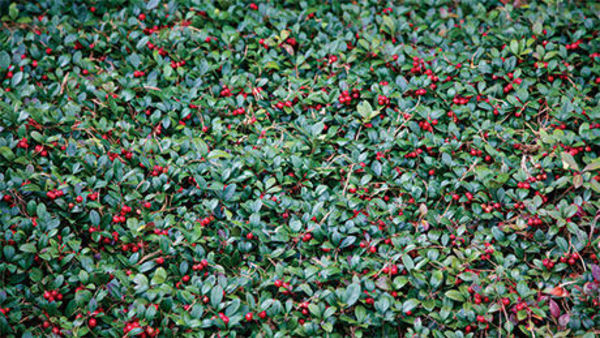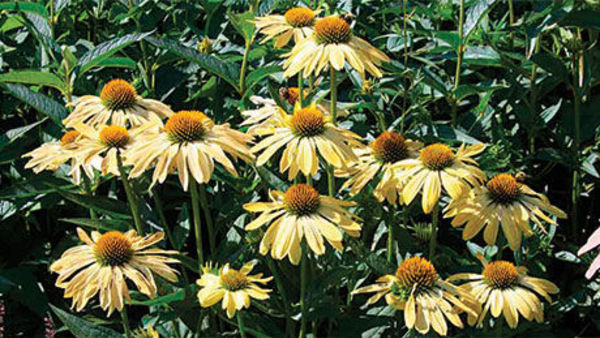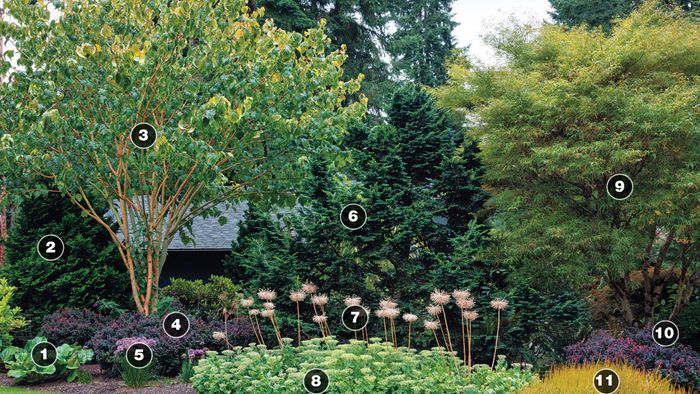 |
Overused: ‘Little John’ callistemon (Callistemon ‘Little John’) |
1. Coral Fountain
Name: Russelia equisetiformis
USDA Hardiness Zones: 9 to 11
Size: 2 to 4 feet tall and 3 to 5 feet wide
Conditions: Full sun to partial shade; well-drained soil
Take the delicate, cascading wispiness of asparagus fern and cover it with clusters of narrow red lipstick tubes and you’ve got coral fountain. This plant originates in Mexico but looks like it might have been brought to earth by extraterrestrials. Coral fountain is a versatile plant, growing in sun or shade, in the ground or in a pot. It can even be trained on a trellis to bring its delightful flowers into view. The foliage is bright green, so when the plant is not flowering (which is seldom), it still commands attention. Another plus: Hummingbirds and butterflies find it attractive.
 |
Overused: Creeping rosemary (Rosmarinus officinalis ‘Prostratus’) |
2. ‘Western Pink Star’ Australian Fuchsia
Name: Correa alba var. pannosa ‘Western Pink Star’
Zones: 9 to 11
Size: 1 foot tall and 4 to 6 feet wide
Conditions: Full sun to partial shade; well-drained soil
Looking for a tough, mat-forming, wide-spreading, erosion-controlling plant to cover a slope? A cultivar of Australian fuchsia, this woody plant sports small, slightly rough, gray-green leaves year-round and is covered with pale pink flowers in spring and early summer. I use it in large beds, where its wide-reaching spread gives me good coverage using fewer plants. ‘Western Pink Star’ is not fussy about soil, but you should avoid highly alkaline conditions. Drought tolerant, it grows in sun or shade (but with less intense flowering in shade) and responds well to pruning.
 |
 Overused: Blue oat grass (Helictotrichon sempervirens) |
3. Cassa Blue® Flax Lily
Name: Dianella caerulea ‘DBB03’
Zones: 7 to 11
Size: 1 to 2 feet tall and wide
Conditions: Full sun to partial shade; rich, well-drained soil
Blue oat grass is a workhorse in many Southern California gardens, but I’ve been substituting it for this better-looking, awesome Aussie. Although the delicate, star-shaped, light blue flowers of Cassa Blue® flax lily are a springtime treat—held on delicate wands above the foliage—it’s the compact, grasslike, blue-gray leaves that put this petite accent plant high on my list of favorites. And when it’s done blooming, grape-size, lilac-colored berries hang on into summer. If planting in clay, site it on a slope or on a mound to improve drainage.
Billy Goodnick is a landscape architect in Santa Barbara, California, and the author of Yards: Turn Any Outdoor Space into the Garden of Your Dreams.
Photos, except where noted: Michelle Gervais




















Comments
Log in or create an account to post a comment.
Sign up Log in